Electrics: Ingenious! Combining lithium and lead. Plus other solutions for more juice on board
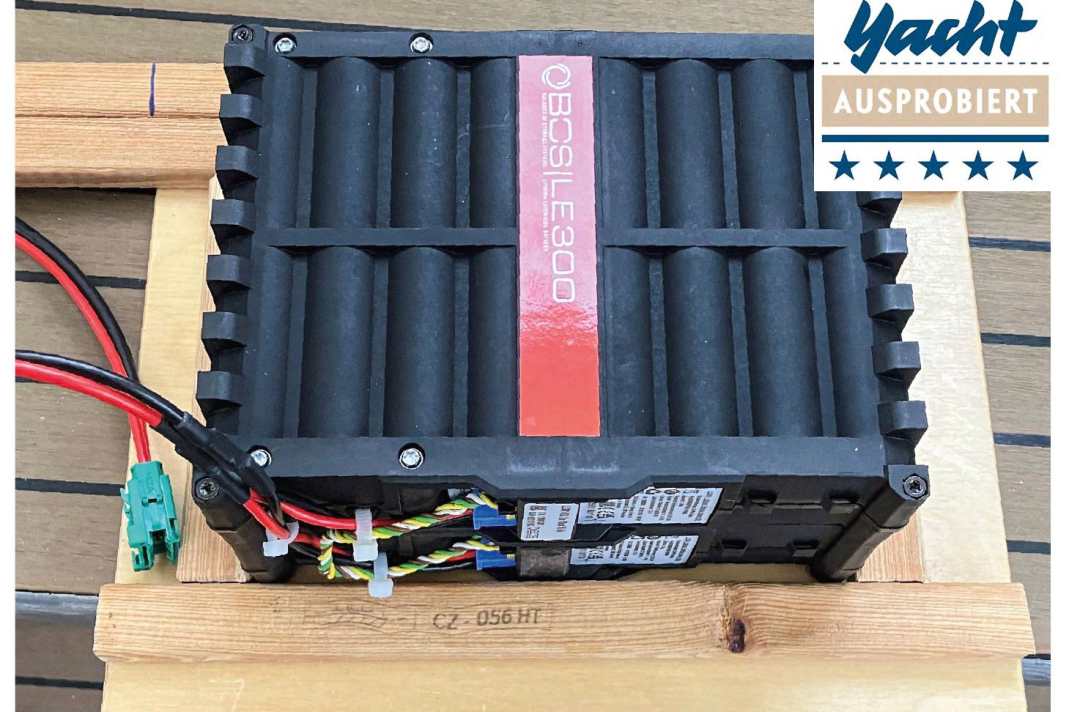


Lithium as a plug-and-play solution
LE300 lithium battery as an extension for any 12-volt lead-acid battery, whether AGM, gel or wet cell
To install the LE300, simply connect it to the positive and negative terminals of the existing battery. Its use then increases the service life and capacity of the normal batteries. Unlike when switching to pure lithium batteries, there is no need to change the charging technology. The integrated BOS high-performance battery management system (BMS) protects and balances the lithium cells and monitors the lead-acid battery. To increase the capacity of the system, several LE300 modules with 25.2 Ah each can be connected in parallel and can also be expanded at a later date.
We tested the addition of two modules to a 190 Ah battery bank for a season. The cells are of high quality and solid workmanship, installation is simple. The supplied cables, including fuse and fuse holder, are simply connected in parallel to the existing battery bank. Thanks to the LE300 batteries, not a single cycle of the gel battery was used during the test phase. All charging cycles were carried out by the lithium modules. We integrated an additional shunt into the system in order to be able to monitor these.
The integrated BMS of each individual cell prioritises the conventional system and absorbs excess charge. This makes it possible to combine the best of both worlds - conventional and lithium batteries. One module measures 17.5 x 22.9 x 6.7 centimetres and weighs 3.4 kilograms. It costs around 460 euros.
Sterling Power BBWS
Charges from the battery and from the solar panel
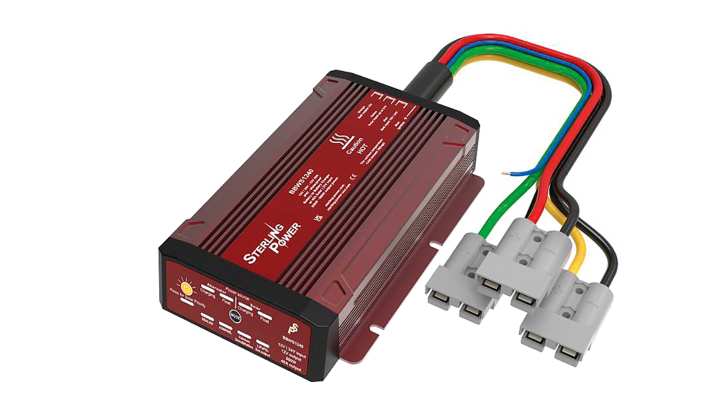
Under the name BBWS, Sterling-Power offers a rare combination of battery-to-battery charger and solar charge controller. The compact devices are completely waterproof and pre-wired. The connection is made via the Anderson plugs commonly used in the low-voltage range. In battery-to-battery mode, they can be operated with an input voltage of 12 or 24 volts and charge 12-volt batteries of common lead-acid and lithium technologies. Depending on the version, they deliver 25 or 40 amps of charging current. The solar input can handle up to 32 volts and 350 or 550 watts of input power. Prices start at 359 euros.
Hydro Charger Light
Electricity from hydropower: new tug generator for coastal sailing vessels
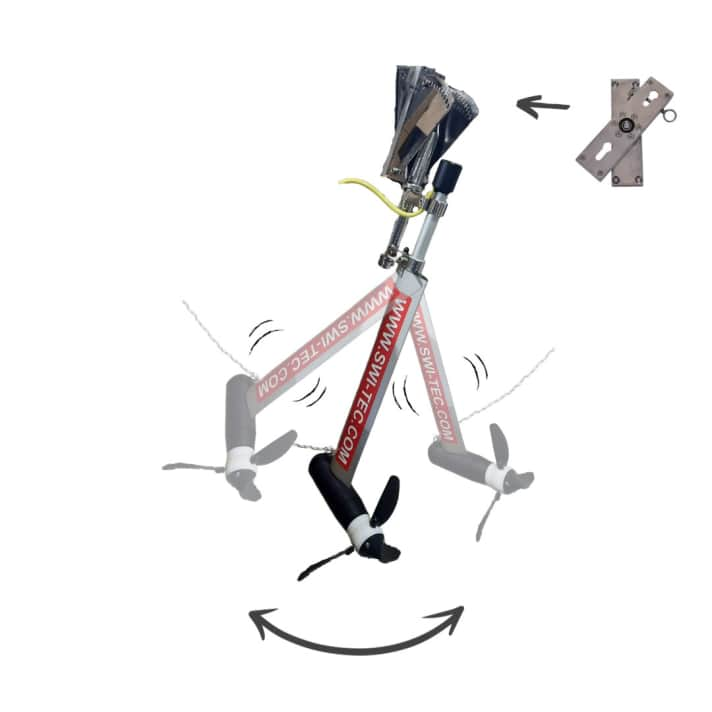
The Swiss company SWI-TEC has revised its generator with the Hydro Charger Light. It is now lighter, easier to operate and can charge the consumer battery from as little as three knots. The hydrogenerator is always positioned vertically in the water thanks to a new bracket that can be swivelled to the side and attached to the stern. As a result, 50 watts of charging power should be possible from a speed of three to four knots through the water. Depending on the speed, up to 500 watts are possible.
The biggest change concerns the weight: the new Hydro Charger Light weighs just twelve kilograms and measures 110 x 10 x 30 centimetres. The pitch of the propeller can be adjusted to the expected average speed of the yacht. The price is 2,359.50 euros.
Hatches and windows
Insulated windows like at home
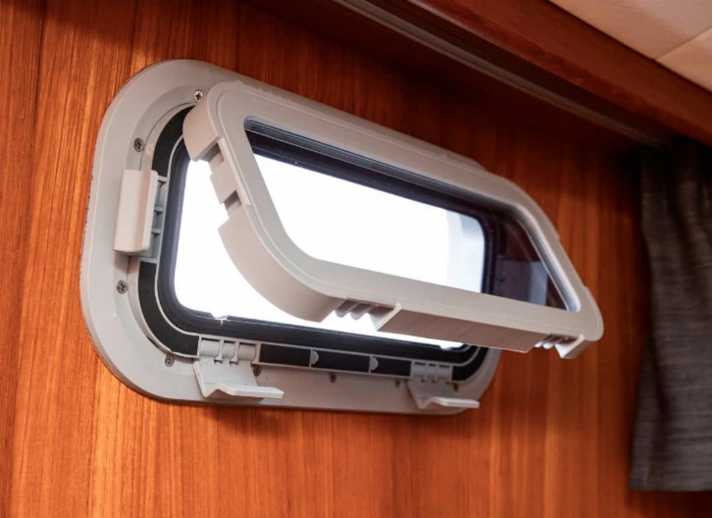
The Dutch company TopWindows has portholes, hatches and superstructure windows with double glazing in its programme. This should make condensation a thing of the past and improve the yacht's insulation. The portholes are available in the dimensions 375 x 175 and 375 x 215 millimetres with various frames. The windows are made to measure according to customer requirements. TopWindows offers a measuring service for 65 euros per window. In Germany, DKYachting from Potsdam distributes the products and can also take care of installation on request. Price on request.
Powerstation
Compact powerhouse
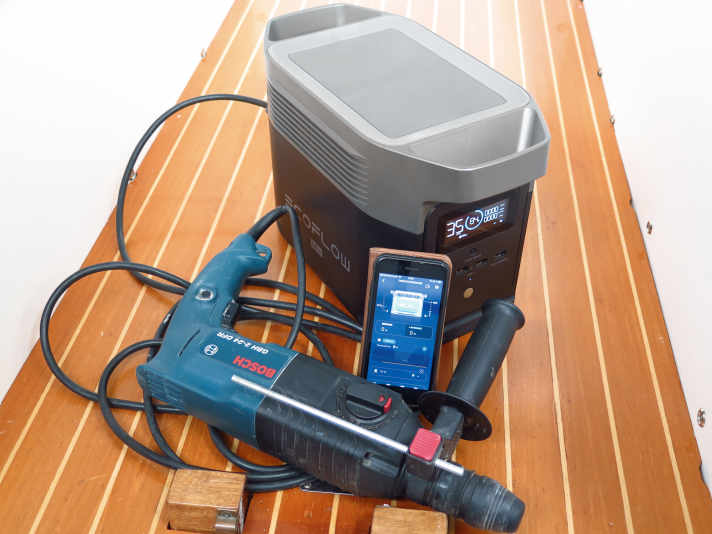
The Powerstation from Ecoflow brings lithium technology to the boat without having to convert the on-board electrical system. It can be used to operate electrical appliances such as a drill or coffee machine - without an additional inverter or shore power. There are various USB and 12-volt outputs. The power station can be charged via 230 volts, 12 volts or solar panels. The control and monitoring via app is practical: in addition to the display on the device, it shows what is being fed in or taken out. From 949 euros.

